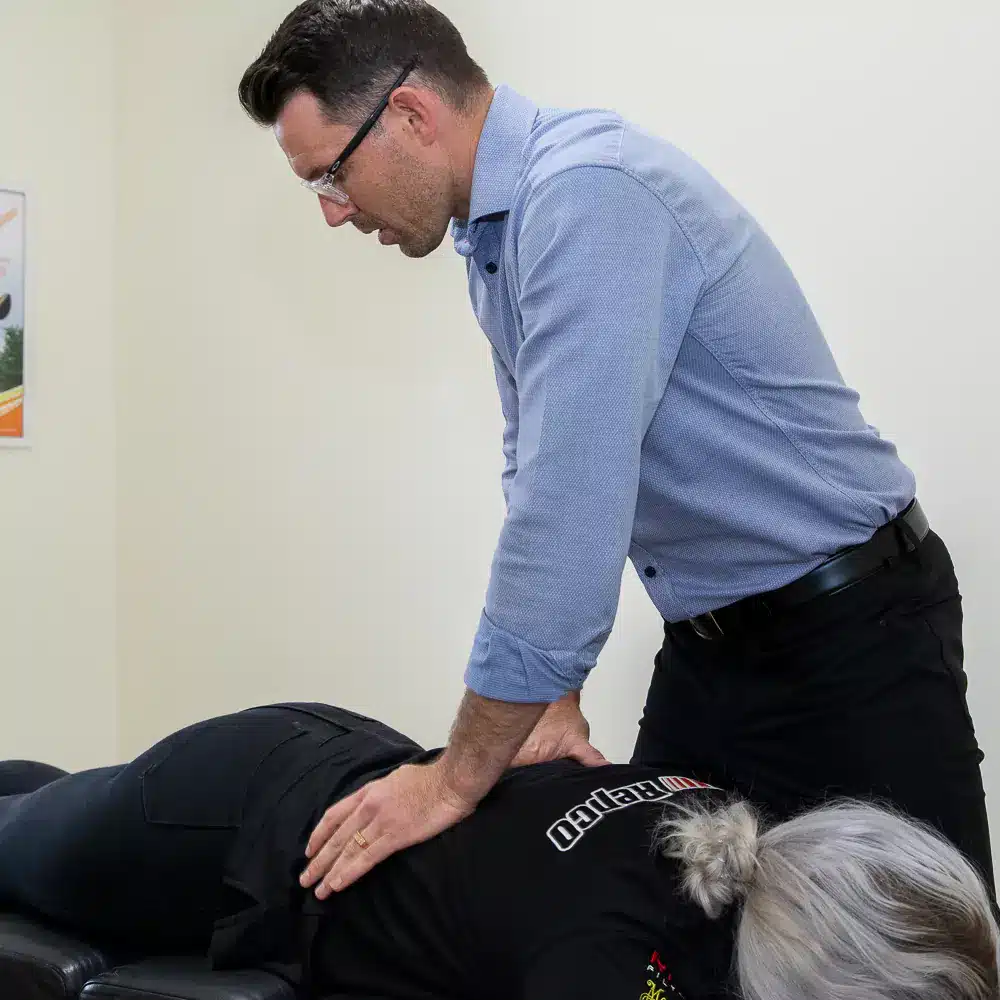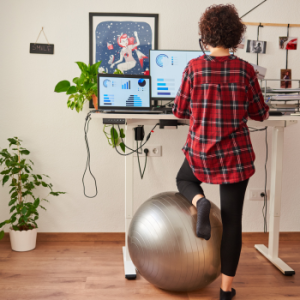At Northern Inland Chiropractic we often have many expecting mothers coming in for treatment when suffering from pregnancy related low back pain. We also have a lot of mothers who stay on for treatment after birth. The goal of treatment is to firstly help with pain management. Secondly, we aim to ensure a comfortable pregnancy and birth for both mother and baby.
Most pain begins around the beginning of the second trimester. At this time there is a large increase in relaxin hormones. Relaxin levels begin to rise drastically between 10-12 weeks of gestation and remain steady at this level until late pregnancy. Relaxin allows connective tissue remodelling of the pelvic ligaments in order to provide the relaxation required for pregnancy and birth. It also allows a separation of the pubic symphysis.
Many expecting mothers assume or have been told that relaxin is responsible for creating laxity in the pelvic ligaments – which leads to pain and strain on the joints. Interestingly, researchers have been unable to find an association between measured levels of circulating relaxin and the tendency for pain. It is now understood that relaxin brings to light and exacerbates old injuries or lumbo-pelvic pain syndromes present prior to pregnancy. Putting it another way, lumbo-pelvic pain in pregnancy is directly correlated to the degree of stability and quality of movement before getting pregnant. This is why Chiropractic is important for care before pregnancy, during and after the birth process especially if there are potentially more children planned for the future.
Now for the technical stuff. It’s a bit dry so you might want to just skip ahead to the last 2 paragraphs of the blog. If you’re game read on!!!
Pain in pregnancy can be divided into 2 categories.
1) Pain in the lumbar (low back) region
2) Pelvic girdle pain – This can affect one or both sacro-iliac joints (SIJ’s) and the pubic symphysis (Pubic Bone). The sacroiliac joints are where your pelvic bones attach to the sacrum via broad fibrous ligaments.
It isn’t unusual for the pregnant patient to have element of both. Pelvic girdle pain is more common during pregnancy and often shifts to lumbar pain after birth.
Pain patterns solely in the front of the pelvis around the pubic symphysis usually respond well to treatment and resolve quickly after birth. Other common patterns include one or both sided sacroiliac joint pain with pain referring into the buttocks and hamstrings. The most debilitating pain comes from a combination of both bilateral SIJ and anterior pubic symphysis pain.
Now we can get into some more function causes of pain now relaxin has been discussed.
Poor activation of the gluteal (buttock) muscles has been studied and shown to be predictive of pelvic girdle pain during pregnancy. The active contraction of the gluteal muscles helps with stability of the sacro-iliac joint when walking (force closure). Gentle chiropractic manipulation of the sacroiliac joints has been shown to increase gluteal muscle activation, improving SIJ function and therefore helping to manage pelvic girdle pain in pregnancy.
The increased lumbar curve in pregnancy is the next thing to consider. As the baby grows the anterior pelvic tilt increases. This shifts the weight-bearing load to the facet joints of the low back. In normal circumstances they should only take between 30-40% of the spinal load. The rest of the spinal load is distributed through the vertebral bodies and intervertebral discs. Studies have shown that a 20% weight increase in pregnancy increases posterior facet joint loading by 100%!!!
Adjustments help distribute the weight bearing load more efficiently, reducing the weight bearing burden of the lower lumbar facet joints. Also, as the lumbar curve increases with a growing baby, so too does the thoracic curvature (kyphosis) make us more hunched. This can place more postural tension on the mid back and neck and why taking a full spine approach to treatment is very important. Gentle seated traction adjustments are often applied to the mid back.
As you progress into your third trimester it is important to not sit in slumped postures such as on couches. Yoga balls are a good substitute for chairs as they allow you to sit with your hips higher than your knees. This will ensure a more neutral spine and comfortable pelvic posture for your growing baby. The more slumped we sit the more posterior the foetus can move, and this creates more generalised discomfort in the low back. Swimming freestyle or breaststroke can also be a nice way to maintain full spine exercise in a weight less environment. Be mindful to not swim backstroke as just like slumped sitting, this will cause the foetus to travel posteriorly.
When getting adjusted whilst pregnant from approximately 20 weeks gestation onwards, special pregnancy pillows are used which allow you to lie down comfortably on your stomach whilst light adjustments are applied to the pelvic girdle. With more and more mothers aiming for natural active births, Chiropractors are now more than ever an integral part of their pre-natal care.
Please see the frequently asked question section on our website for more information.
References:
- Van Benten, E., Pool, J., Mens, J., & Pool- Goudzwaard, A. (2014). Recommendations for Physical Therapists on the Treatment of Lumbopelvic Pain During Pregnancy: A Systematic Review. The Journal of Orthopaedic and Sports Physical Therapy, 44(7), 464–A15.
- Aldabe, D., Ribeiro, D. C., Milosavljevic, S., & Dawn Bussey, M. (2012). Pregnancy-related pelvic girdle pain and its relationship with relaxin levels during pregnancy: a systematic review. European Spine Journal, 21(9), 1769– 1776. doi:10.1007/s00586-012-2162-x
- Al-Sayegh, N. A., George, S. E., Boninger, M. L., Rogers, J. C., Whitney, S. L., & Delitto, A. (2010). Spinal Mobilization of Postpartum Low Back and Pelvic Girdle Pain: An Evidence- Based Clinical Rule for Predicting Responders and Nonresponders. PM & R, 2(11), 995–1005.
- Damen, L., Buyruk, H. M., Güler-Uysal, F., Lotgering, F. K., Snijders, C. J., & Stam, H. J. (2002). The prognostic value of asymmetric laxity of the sacroiliac joints in pregnancy-related pelvic pain. Spine, 27(24), 2820–2824.
- Gutke, A., Kjellby-Wendt, G., & Oberg, B. (2010). The inter-rater reliability of a standardised classification system for pregnancy-related lumbopelvic pain. Man Ther, 15(1), 13–18. doi:10.1016/ j.math.2009.05.005
- Kanakaris, N. K., Roberts, C. S., & Giannoudis, P. V. (2011). Pregnancy-related pelvic girdle pain: an update. BMC Medicine, 9(1), 15. doi: 10.1186/1741-7015-9-15





